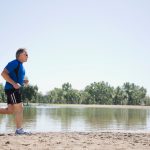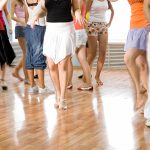
Competitive sports can be a lot of fun for kids and teens, but starting a new season requires some planning. Nemours TeensHealth offers some suggestions for kids and teens who are taking up a new sport or beginning a new season. Start by getting into shape. That will make it easier when you begin your sport. You can do this by writing down an exercise plan. Ask your coach, gym teacher or trainer for workout ideas. If you can’t get to the gym, apps and online workouts offer options for exercising at home. Write down your goals for the week and your workout plans. If you schedule specific workout times, it will help you stay motivated and stick to your exercise plan. Make a note of a workout you particularly liked so you can repeat it another week. Set realistic goals. While this can include general goals like making the team or getting in shape, smaller, specific goals are easier to achieve and can help you build toward your bigger goal. Write down those goals and discuss them with a parent or coach. Set new goals once you reach those on your list. Gear up. If you’re returning to your sport, make sure your equipment still fits. If you’re new to a sport, ask your coach what you’ll need. Secondhand or borrowed gear can save… read on > read on >































-300x200.jpg)






